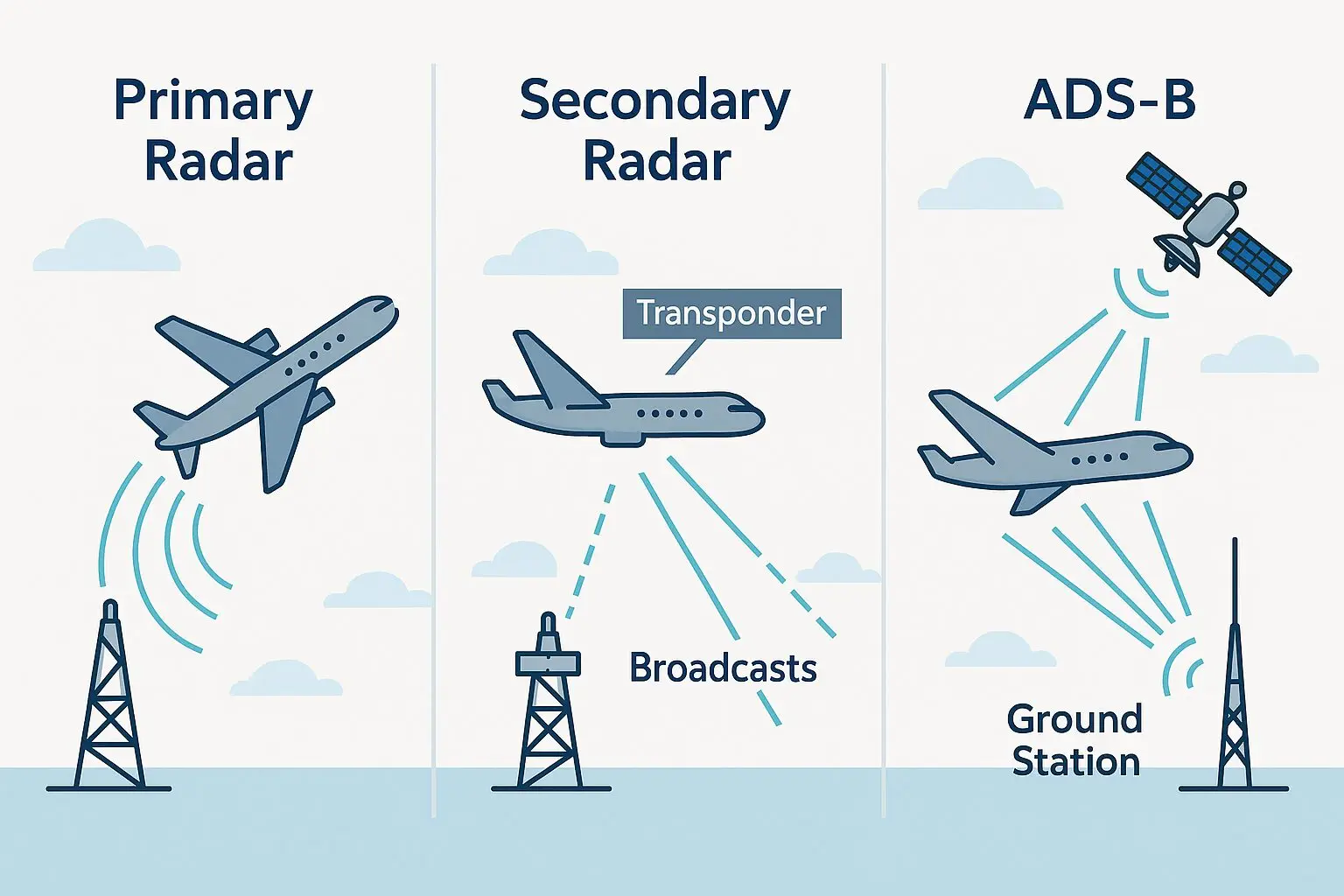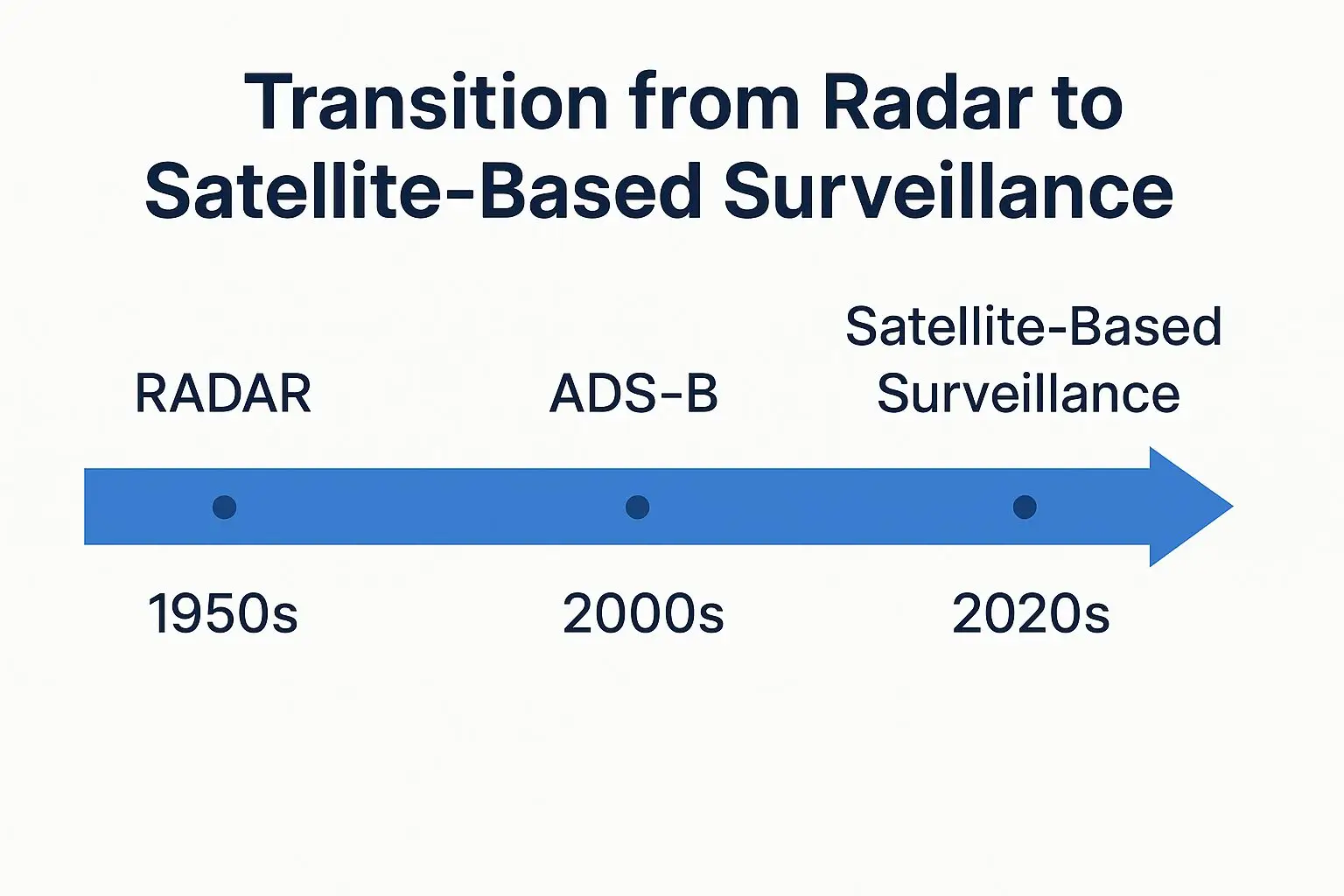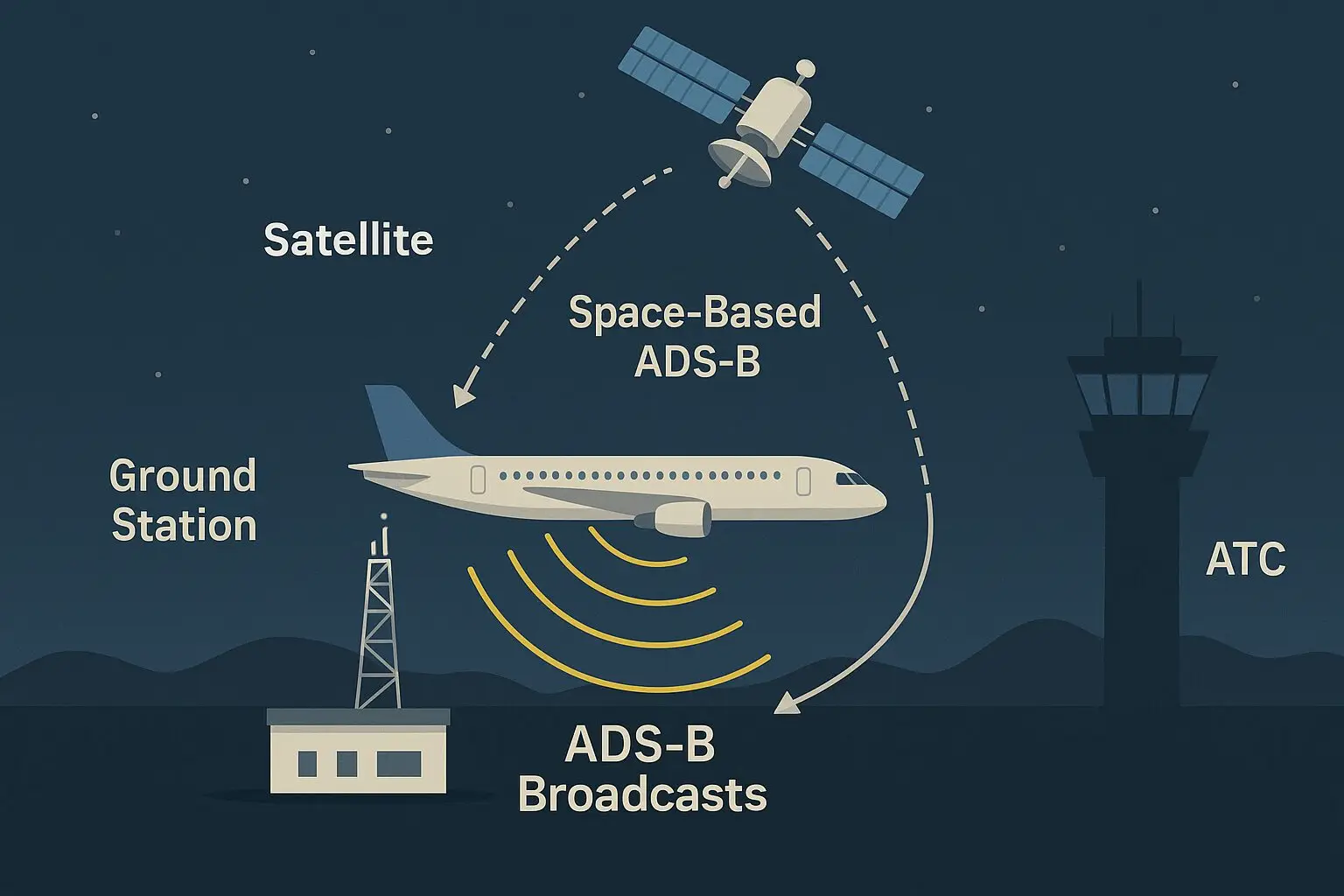Introduction to ADS-B
This page provides an ADS-B system overview. Automatic Dependent Surveillance–Broadcast (ADS-B) is a transformative surveillance technology used in modern aviation to improve aircraft tracking, situational awareness, and air traffic management. Unlike traditional radar systems, which rely on ground-based transmissions and reflections, ADS-B is a satellite-based technology that enables aircraft to determine their position using a Global Navigation Satellite System (GNSS), such as GPS, and broadcast that position in real-time to air traffic control (ATC) and other aircraft. This broadcasted information includes not only position but also velocity, altitude, identification, and other flight parameters.
The name “ADS-B” breaks down into four descriptive elements. The system is automatic, meaning it requires no pilot or controller input to function. It is dependent because it relies on external navigation sources, such as GNSS, for accurate data. As a surveillance system, ADS-B enables both controllers and other aircraft to monitor air traffic, and it is a broadcast system because the data is transmitted openly and continuously to any compatible receiver within range.

In contrast to traditional radar methods—primary radar, which passively detects aircraft by bouncing radio waves off them, and secondary radar, which actively interrogates onboard transponders—ADS-B represents a more proactive and precise means of surveillance. ADS-B-equipped aircraft autonomously send out their position and intent without the need for interrogation, significantly reducing latency and increasing the frequency of updates (typically once per second).
The adoption of ADS-B is central to the FAA’s NextGen initiative, which seeks to modernize the U.S. National Airspace System by improving its efficiency, capacity, and safety. As of January 1, 2020, the FAA requires all aircraft operating in Class A, B, and C airspace and above 10,000 feet (with some exceptions) to be equipped with ADS-B Out capabilities. Internationally, the International Civil Aviation Organization (ICAO) oversees global coordination and standardization of ADS-B implementation through its Annex 10 standards.

The operational benefits of ADS-B are significant. It improves surveillance coverage in remote or oceanic regions where radar is not available. It provides more accurate and timely data to controllers, allowing for reduced separation minimums and more efficient routing. Pilots equipped with ADS-B In can receive traffic and weather information directly in the cockpit, enhancing situational awareness and reducing reliance on voice-based ATC communications.

ADS-B is also an enabler of advanced aviation services, including surface movement tracking at airports, conflict detection and resolution systems, and future concepts like 4D trajectory-based operations. By replacing and augmenting legacy radar infrastructure, ADS-B offers a scalable and globally harmonized foundation for the next generation of air traffic management.